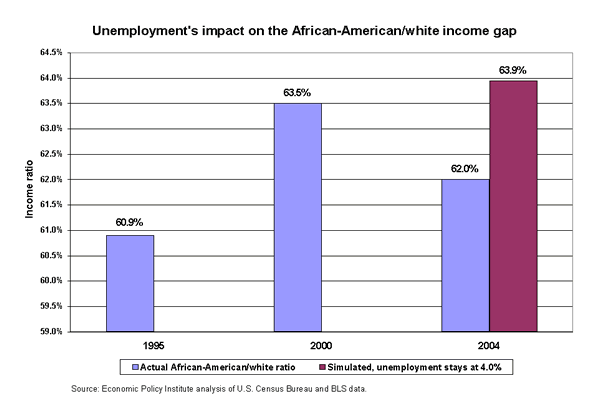See Snapshots Archive.
This week’s Snapshot previews data to be presented as part of the forthcoming The State of Working America 2006/07.
Snapshot for July 5, 2006.
Weaker job market re-opens racial income gap
Compared to the full-employment job market of the latter 1990s, the weaker post-2000 labor market has reversed significant progress in racial income gaps.
In 1995, the median income of African-American families was 60.9% of that of white families (in 2004 dollars: $31,966 versus $52,492). By 2000, when the unemployment rate fell to 4.0%, the ratio was 63.5% (still a very large income gap: $36,939 versus $58,167 in 2004 dollars), the highest level on record, going back to 1947.
But as the third set of bars on the chart below reveals, the racial gap widened by 2004 (most recent data) as a result of the recession and the jobless recovery that followed. The last bar, based on a statistical model of the historical relationship between the racial income gap and unemployment, shows the ratio that would have prevailed in 2004 had unemployment remained at 4.0% instead of rising. The result is that the African-American/white income ratio would have been 63.9%, even larger than the 2000 record, and significantly higher than the 62.0% that actually occurred in 2004. That 1.9 percentage point difference translates to an income loss for the typical black family of over $1,000 in 2004 alone. This finding suggests that unless the very favorable labor market conditions of the latter 1990s return and are maintained, racial income gaps are likely to widen further.

